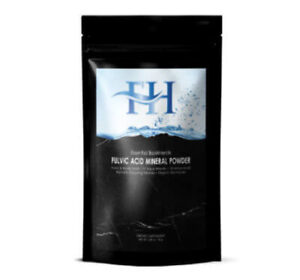If you want to know how nutritious your morning cereal is, it’s as simple as looking at the box. But eggs aren’t laid with labels, so learning more about their quality isn’t as easy as reading an ingredient list. How chickens are raised and what they’re fed has a significant impact on the taste and nutritional value of eggs, but the claims on cartons are tough to interpret. What do buzzwords like “Farm Fresh” and “All-natural” mean? Are you getting a healthier product, or are you paying more for the same old eggs? Before you scramble, here’s what you should know.
Grade
An egg’s grade is determined by its quality at the time it’s packed. Grade AA, A and B are all safe for human consumption, but like meat, there’s a difference in quality at each level. Grade AA eggs are clean and stain-free with clear albumen and a firm yolk. They give a beautiful presentation when fried. Grade A eggs are slightly lower quality. They taste the same, but you can expect runnier whites and softer yolks that are prone to break. If you can get them at a discount, bring them home for omelets and baking. Grade B eggs have defects inside and out including shell staining and blood spots, so while they’re nutritionally similar, they’re rarely available in stores. Grade B eggs are inexpensive and used to make powdered or liquid egg products.
The Chicken’s Living Conditions Matter
Eggshells are porous. Washing them isn’t recommended because it removes the shell’s natural protective layer, allowing bacteria in. The cleaner eggs stay after they’re laid, the better, but more than 95% of eggs produced in the United States come from chickens housed in cramped battery cages. With less than 70 square inches to move in, feces and other debris are more likely to adhere to shells. Pastured, or free-range chickens live a better life, but being outdoors also means they carry dirt on their feet. Coops that allow debris to accumulate near eggs are less hygienic, while certain designs of chicken tractors help keep eggs cleaner and more of them off the floor.
Size
Egg size doesn’t reflect quality. Sizes are assigned per USDA guidelines, so consumers know what they’re getting. The only thing that can be affected by the size of the egg is the foods that you use them in. In recipes, the difference between a 1.5-ounce small egg and a 2.5-ounce jumbo egg makes a big difference in how the recipe turns out, so size consistency among a dozen eggs is important.
Cage-Free Versus Free-Range and Pasture-Raised Eggs
Marketing terms like cage-free imply that chickens live a healthier, natural life. But while they fare better than their caged cousins, cage-free hens live exclusively indoors in as little as 120-square inches of space. Eggs labeled free-range come from chickens that can venture outdoors. At least two square feet of area is required for each, allowing space for instinctive behaviors like scratching. Pasture-raised hens have more comfortable and stress-free living conditions with a minimum of 108 feet of space to forage in, but access to the outdoors isn’t always guaranteed. Products labeled “Certified Humane” means chickens get high-quality feed and space and freedom to do what comes naturally. Nutritionally, macronutrient content among all eggs in similar. But free-range eggs have been shown to contain up to 50 percent more Vitamin E. Chickens that can go outdoors synthesize natural Vitamin D from exposure to the sun. Eggs from pastured hens boast up to a third more than commercial eggs.
The Hormone-Free Gimmick
The use of hormones in poultry production has been banned since the 1950s. The least expensive eggs on the grocery store shelf are hormone-free, so paying extra for labeling that says so doesn’t give you healthier eggs. The same is also true of antibiotic-free eggs. Once used to help commercial chickens grow larger, the liberal use of antibiotics is no longer a trend. Does that mean all eggs are 100 percent free of antibiotics? No, but data suggests that is a minimal concern.
All Eggs Are Farm-Fresh
Most eggs are delivered to stores within three days of being laid. Eggs brought to market later than that suffer in quality and are often assigned a lower, less profitable grade. The term farm-fresh has no intrinsic meaning. The best practice is to use eggs within five weeks of purchase. Expiration or sell-by dates are not required by federal law. Regulations in individual states vary.
Dark Yolks Versus Light Yolks
Research shows that when chickens eat a diet rich in carotenoids, their eggs have deep yellow yolks with higher concentrations of beta-carotene — a powerful, anti-inflammatory antioxidant. But while commercial feeds add synthetic forms of these nutrients, organic-fed hens get it via greens and treats such as pumpkin and carrot. Dark egg yolks are also associated with naturally higher levels of omega-3 fatty acids and lower cholesterol content. So-called “omega-3 enriched” eggs aren’t necessarily better because the extra often comes in the form of flaxseed added to a hen’s diet — something that isn’t proven to boost levels in eggs.
Brown Eggs Are Not Healthier
Brown eggs carry a hefty price tag compared to their pale cousins, but it’s not because they’re better for you. Brown eggs are laid by larger, heavier breeds of chicken that require more feed, and the cost is passed on to you. The heftier feel of the egg is because the shell is thicker. You’re not getting more for your money. Eggs come in a variety of colors from the usual brown and white to pink, blue and speckled, but they’re all equally nutritious. Whether or not a chicken has a diet made up of organic chicken feed or not and the chicken’s living conditions make much more of a difference in the health value of an egg than anything else. The color is just arbitrary.
The Real Meaning of “All-Natural”
The FDA defines the term “all-natural” to mean that nothing artificial or synthetic has been added to a food. It has no bearing on what a chicken is fed. It only means that nothing unnatural has been added to the egg itself. It’s a meaningless claim because all eggs are all-natural.
Marketing techniques that improve transparency are important because consumers have the right to know what they’re eating. Yet, studies show that among supermarket eggs, there is less variation in quality than packaging claims imply. Ultimately, all eggs are nutritious, but eggs laid by chickens living in better conditions have a clear micro-nutrient edge. The more eggs you eat, the more that matters.
If you’re someone who appreciates the value of organic nutrients, try some of our organic health products!




